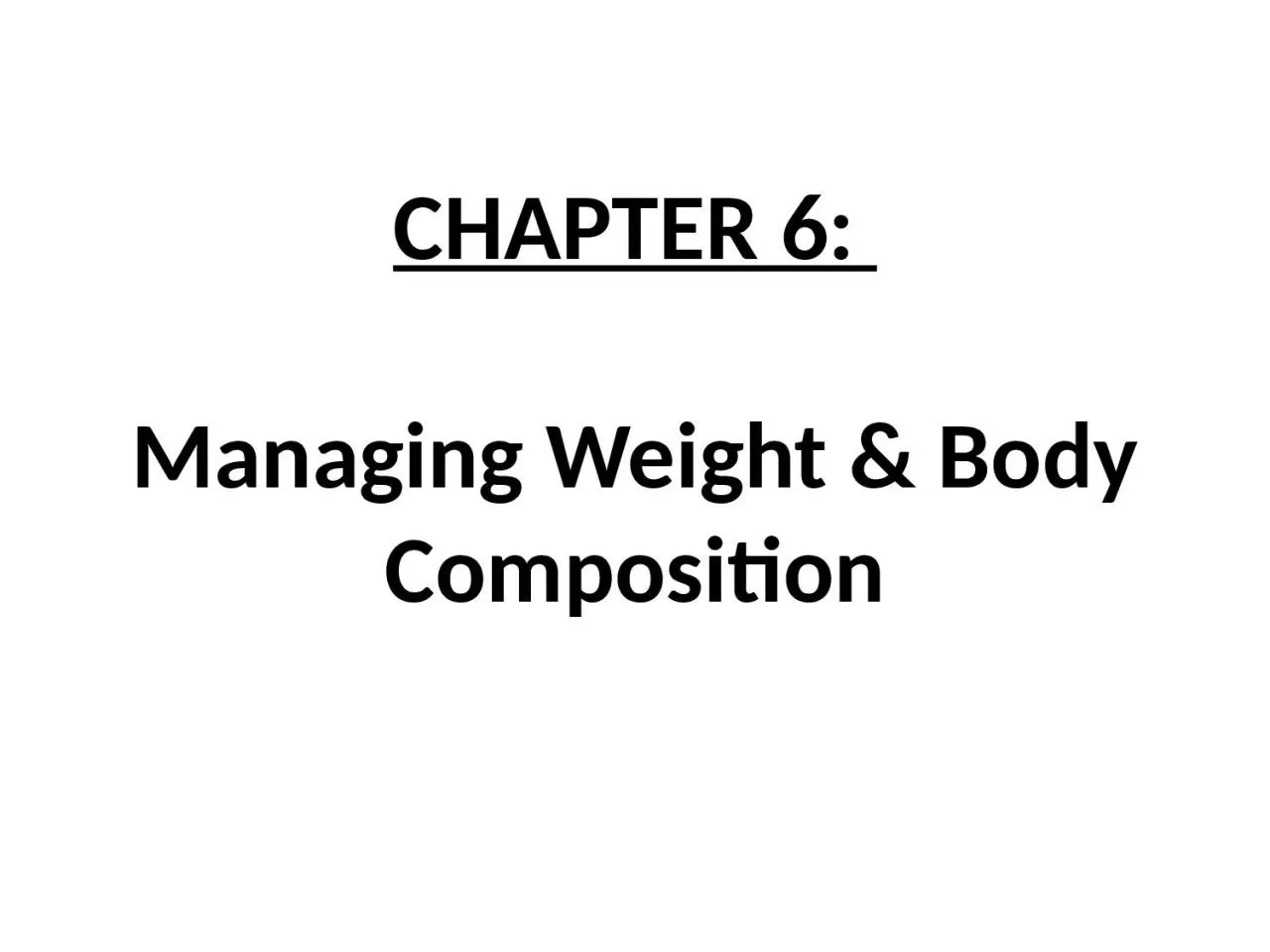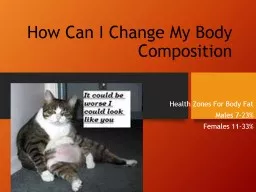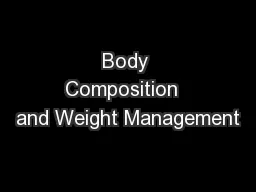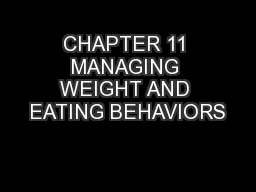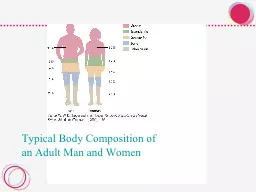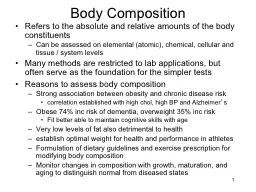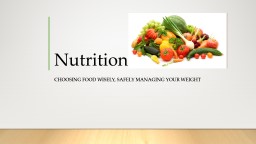PPT-CHAPTER 6: Managing Weight & Body Composition
Author : callie | Published Date : 2024-01-13
THE WEIGHTCALORIE CONNECTION MAINTAIN WEIGHT CALORIES YOU EAT CALORIES YOU BURN THE WEIGHTCALORIE CONNECTION WEIGHT LOSS CALORIES YOU EAT CALORIES YOU BURN THE WEIGHTCALORIE
Presentation Embed Code
Download Presentation
Download Presentation The PPT/PDF document "CHAPTER 6: Managing Weight & Body C..." is the property of its rightful owner. Permission is granted to download and print the materials on this website for personal, non-commercial use only, and to display it on your personal computer provided you do not modify the materials and that you retain all copyright notices contained in the materials. By downloading content from our website, you accept the terms of this agreement.
CHAPTER 6: Managing Weight & Body Composition: Transcript
THE WEIGHTCALORIE CONNECTION MAINTAIN WEIGHT CALORIES YOU EAT CALORIES YOU BURN THE WEIGHTCALORIE CONNECTION WEIGHT LOSS CALORIES YOU EAT CALORIES YOU BURN THE WEIGHTCALORIE CONNECTION WEIGHT . 2 1 29 13 117 348 158 462 21 184 1507 684 2004 909 51 24 11 31 14 118 357 162 475 215 185 1534 696 204 925 52 25 11 33 15 119 367 166 488 221 186 1561 708 2076 942 53 27 12 36 16 120 377 171 502 228 187 1588 72 2112 958 54 28 13 38 17 121 388 176 515 Health Zones For Body Fat. Males 7-23%. Females 11-33%. Body composition. Muscle. Water. Bone. Fat. Body . composition is the ratio of these four things. Calories in and Calories out. There are . 3500 calories . Senior Leaders Course. Implement the . Army. Body Composition Program. . 2. Concrete Experience. GROUP 1: . Identify 5 things that are . right. with the Army Body Composition Program.. GROUP . 2: . Learning outcomes. Discuss the basic physiological concepts related to body composition. Compare and contrast laboratory and field methods to determine and interpret body composition. Discuss physiologic, environmental and behavioral factors that influence weight control. CHAPTER 11. FOCUSES ON HEALTHFUL WAYS TO MANAGE WEIGHT,THE NEGATIVE IMPACT OF EATING DISORDERS, AND HOW NUTRITIONAL NEEDS CHANGE THROUGHOUT LIFE.. CHAPTER 11 LESSON 1. THE ABILITY TO MANAGE WEIGHT IN HEALTHFUL WAYS REQUIRES AN UNDERSTANDING OF THE METHODS USED TO DETERMNE A HEALTHY WEIGHT RANGE AND THE FACTORS THAT IMPACT AN INDIVIDUAL’S FOOD NEEDS.. Changes in body weight reflect shifts in many different materials not only fat, but also water, bone minerals, and lean tissue such as muscles.. An 18 yr. old teen who is 5’10 and weighs 150lbs. Carries about 90lbs. as water and 30lbs. as fat. 30 lbs. are lean tissues: muscles, organs and bones of the skeleton. If all of that is stripped away the person only weighs 30lbs.. Reaching and Maintaining a Healthy Weight Module 3 GOALS AND OBJECTIVES Demonstrate knowledge of the relationship between weight and health. Critically evaluate lab tests and field assessment methods for body composition, their advantages and their limitations. an Adult Man and Women. Body Composition Assessment. Body Mass . Index. Waist Size. Bioelectrical . Impedance. Waist-to-Hip. Ratio. Skinfold Fat. Measurement. The Bod Pod. Dual X-ray . Absorptiometry. Can be assessed on elemental (atomic), chemical, cellular and tissue / system levels. Many methods are restricted to lab applications, but often serve as the foundation for the simpler tests. Reasons to assess body composition. Do Now. Write down anything that comes to mind when you think of body composition. What do you think are some criteria for a positive body composition?. If you went to the doctor today and they told you that you needed to lower your body composition, what 3 realistic changes could you make?. OVERVIEW. Body Composition Concepts. . Methods of Assessing Body Composition. Body Composition Classifications. Practical Applications for Athletes. BODY COMPOSITION CONCEPTS. The body’s relative amounts of fat and lean body tissue (or fat-free mass – FFM). Download PDF Weight Loss Breeze™ eBook by Christian Goodman - A Unique Way to Boost the Effectiveness of Whatever Diet You’re On and Whatever Workouts You Do. Download PDF Weight Loss Breeze™ eBook by Christian Goodman - A Technique That Uses Simple Breathing Techniques to Help With Weight Loss and Remain Fit. Why you Eat. Reasons for eating:. To meet your nutritional needs. To satisfy your appetite. To supply your body with energy. Hunger. - feeling of physical discomfort that is caused by your body’s need for nutrients, inborn response.
Download Document
Here is the link to download the presentation.
"CHAPTER 6: Managing Weight & Body Composition"The content belongs to its owner. You may download and print it for personal use, without modification, and keep all copyright notices. By downloading, you agree to these terms.
Related Documents

